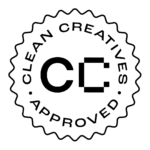In today’s fast-paced, consumer savvy society, email can be a terrific way to build relationships with your customers. If you have a product with a long lead time, it can help to have an automated lead nurturing strategy, so you can focus on the leads that are hot and likely to convert into customers, rather than those who are unlikely to make the jump.
Here are some tips on how to incorporate email automation into your lead nurturing strategy, and tactics to ensure you truly engage your customers.
Email automation tools
First, and most importantly, you need to have a tool that is up to the job. Many high-end marketing automation tools, such as Salesforce Marketing Cloud (formerly Exact Target), Microsoft Dynamics, or lower budget tools such as MailChimp, Hubspot or DotMailer have methods of creating automated customer journeys.
Automation enables you to drip feed emails and text messages, or even schedule actions for your team members, based on actions a customer takes. For example, if they open a message, click on a certain link or visit your website, you can then send them targeted follow up communications. Make sure you have a tool that has all the functionality you need to save the complication of switching further down the line. Try a few different packages before you fully commit, it’s easier in the long run! A cheaper tool may well meet your needs. MailChimp, for example, has as an array of automation tools available for free up to a certain volume of recipients.
Map out the customer journey
Once you’ve chosen your tool, you’ll want to map out the “journey” a prospective customer might take. How will they first find you? What actions do you want them to take and what will you send them to nurture them through the buying process? Is email the best communication tool? Could SMS tip them over the line? Could a personal phone call provide the final touch point to seal the deal? Sketch every stage your customer goes through in the buying cycle and map the corresponding marketing touch points. This will help you identify any gaps or opportunities before you begin building your campaign.
On brand
Once you’ve got your journey mapped out, you’ll need to create your content for your message sequence. We’d suggest short, succinct messages that introduce people to your brand and provide information to help demonstrate your expertise and experience whilst providing solutions to their needs and challenges. Put yourself in your customer’s shoes and deliver content that helps them. This will put you in the driving seat over your competitors when they come to making a buying decision.
Subject lines
Once you’ve created your content, think about your subject lines for your emails. The right subject line can drastically improve your email open rates. Consider taking the time to create a subject line testing plan. Should your subject lines be long or short? Emotive or factual? Personalised or not? Continually testing and improving your subject lines will give you incremental improvements in the performance of your campaign.
Audience
You’ll need to make sure you are compliant with GDPR legislation. Make sure you have permission to contact someone and ensure that their preferences are adhered to. Just because they say they don’t want to be emailed, doesn’t mean you should switch to calling or SMS! It will save your brand any damage if you make sure you only contact people when they are interested and expecting your communications.
Provide an ‘opt-in to marketing’ field in your sign up forms and be transparent as to what customers are signing up for with a clear message to your privacy policy. Make sure you also leave your opt-in box unticked. Pre-ticking the box is no longer allowed and was bad practice at any rate. It’s also wise to require a double opt-in for a belt and braces approach to GDPR compliance. Your email provider will have this functionality as standard.
Experiment with timings
Everyone has a busy inbox. It’s a challenge to break through the noise. If you’re struggling to drive opens and your email engagement is poor, try different times of the day or even different days of the week. We’ve had some success sending B2B comms on Sunday evenings when people are typically not in “work” mode. All the marketing textbooks say don’t do this, but for some products and industries, if you get to decision makers when they’ve got time to think they can be very receptive. Testing is the key…
Test, iterate, test, iterate, test again…
Finally, don’t expect your customer journey to just work straight away – lead nurturing sequences are, by their very nature, tricky to get right and will vary considerably based on which industry, sector and niche you’re in. What works for one industry may well crash and burn for yours. Use your existing knowledge, but don’t be afraid to try something new and daring.
You can use A/B testing to send a proportion of your list one version of your campaign to compare the performance with another version. This will allow you to continually test which version receives more opens, clicks and conversions. Test your template layout, marketing messaging, calls to action, subject lines, link colour. In fact pretty much anything. This is a great way to incrementally improve your campaigns and marketing success.


